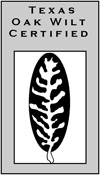Follow Us x
Above It All Tree Care
Your complete tree trimming and tree pruning service in Temple, Belton, Harker Heights, TX and Surrounding Areas
Tree trimming and pruning greatly contributes to the over all health of a tree. However, this job should not be done by just anyone with a ladder. Trimming or completely removing one of the major branches can result in a weak growth and other issues. If you leave too much of a stub on any of the major branches, they will eventually die off and make the tree more susceptible to disease or insects at that point of entry.
Here at Above It All Tree Care we offer expert tree trimming services to Temple, TX, Belton, TX Harker Heights, TX and neighboring communities. Contact our team for tree trimming and pruning services.
Tree Pruning
Pruning (often called "trimming") helps develop good structure in growing trees and shrubs. Pruning also allows for maintaining space between buildings, streets, other plants, utility lines etc. and removes hazardous dead or broken limbs. When pruning trees we remove crossing, co-dominant, dead, diseased, and dying limbs that can aid in the spread of diseases and become safety hazards. Pruning can be a source of stress on mature trees and shrubs when
improperly done. Our Arborists make all of our cuts according to the ANSI A300 standard. Also with our belief that every leaf has its purpose, you can be assured that our pruning is done to provide necessary clearances while maintaining and improving the natural
structure of your trees and shrubs. See below for our pruning options and best practices.
Maintenance Pruning
Proper maintenance pruning is generally called "crown cleaning", and entails the selective removal of crossing, co-dominant, dead, diseased and dying limbs. The purpose of this pruning is to establish proper branching structure to develop a stronger, healthier tree canopy. Our Arborists are trained to follow proper pruning methods defined in the ANSI A300 standard. Our belief is that every leaf has its purpose, and pruning should be done for specific, explainable reasons.
Pruning to Clear
This pruning is functional in purpose, used to keep a tree from encroaching too closely on a structure. The distance specified on the proposal refers to a target buffer space between a structure and the nearest smaller limbs of a tree. Smaller limbs within this buffer space would be removed. There may be a main trunk or a main scaffold limb within this buffer zone, but that would not be removed without prior discussion with the tree owner. Canopy overhanging the roof of a structure is expected but will also be pruned to be kept the specified distance away from the structure. In general, smaller ornamental trees are cleared 1-2 feet from a structure, medium shade trees 2-4 feet, and larger shade trees anywhere from 6-10 feet from a structure.
Canopy Raising
The area of the tree targeted is the lower outer edge of the canopy, and this pruning is done at customer request, usually for aesthetic and/or functional purposes. In terms of tree health, not raising a tree is neither a good or bad thing. Raising a tree too much is not recommended. When a client chooses to have a tree raised, usually this can be accomplished by only removing smaller limbs, as opposed to main limbs proceeding from the main trunk.
As a tree matures, main scaffold limbs may be removed to achieve the height desired by the client. The height of raising indicates the space between the ground surface and the nearest part of the lower outer canopy, so a tree on a sloped surface would end up with a lower canopy matching the angle of the slope beneath it. Canopy raising should be clarified carefully on the proposal to make sure the Arborist doing the pruning will understand the client's desire.
These techniques are not encouraged for good tree health. If these improper techniques are "needed", it is likely that the tree is too large for its location. Instead of repetitively performing these poor techniques, it is recommended that the tree be removed and a more suitable tree be planted that will mature into the desired height. The alternative is to continue fighting a tree's genetic potential for the rest of its life, which incurs higher maintenance fees over time, as well as puts undue stress on the tree.





